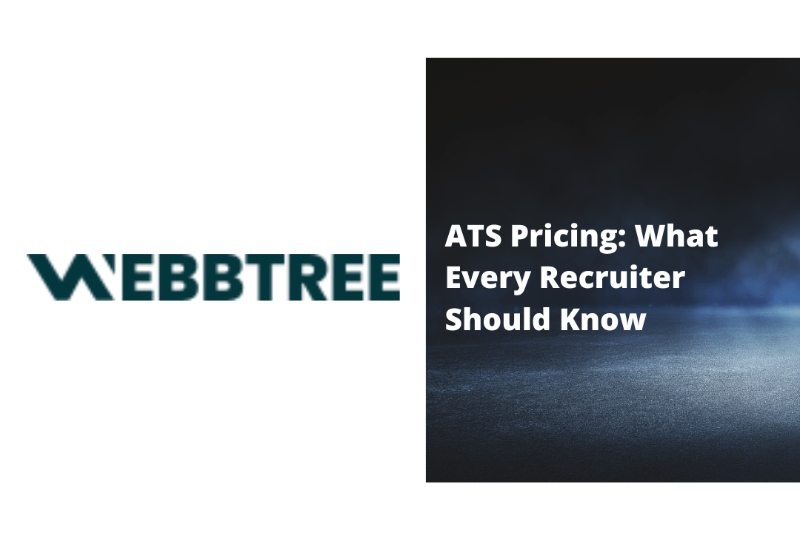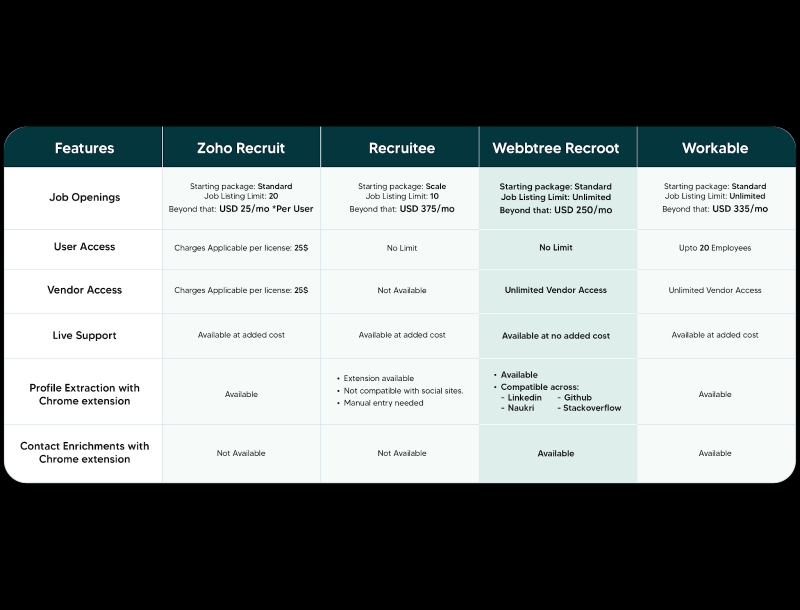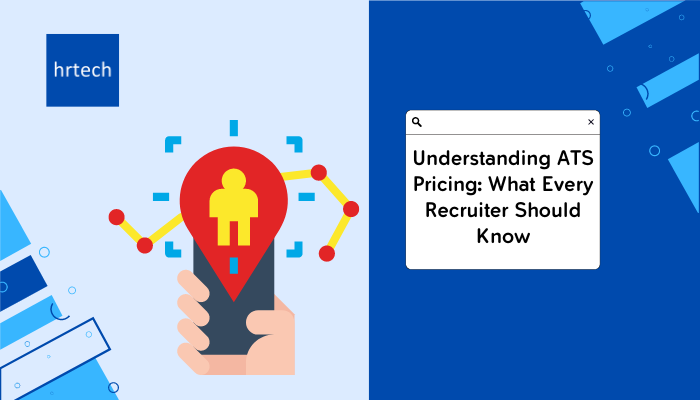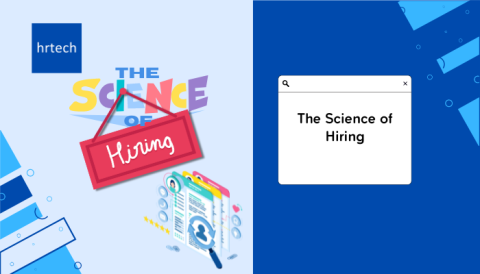With an effective ATS at your disposal, you can – automate repetitive tasks, lower hiring cycle costs, increase candidate engagement, and get more work done with less effort
by Webbtree

In a perfect world, every recruiter would have a magic wand but in the real one, you have ATS (which is no less than a secret weapon) to supercharge your recruiting strategy. To be specific, almost 86% of recruiters admitted that getting an ATS decreased their time to hire.
With an effective ATS at your disposal, you can – automate repetitive tasks, lower hiring cycle costs, increase candidate engagement, and get more work done with less effort. But an ATS is also no less than a colossal investment for your recruitment process. This makes measuring its cost-to-benefit ratio important before investing.
There is a plethora of Applicant Tracking Systems in the market today, in different shapes, prices & sizes. The abundance of choices makes choosing the best one crucial. What is the best way to identify an ATS that will serve you better?
You can start by analyzing your recruiting needs, your hiring frequency, and your budget for an ATS. ATS pricing models today can vary depending on several factors – company size, frequency of recruiting, number of users, features, and more. Considering the different recruitment requirements of the companies, let’s dive into the prevalent ATS pricing models.
Popular ATS Pricing Models:
Pay-per-Job Model:
The pay-per-job pricing model charges the company only when an applicant applies to that particular job or when a particular job opening is created. It’s quite a helpful pricing structure, especially for enterprises with large volume hiring needs. This model starts from $100 and ranges up to $500, but might not be very reasonable as your hiring needs increase.
Pay-per-Recruiter Model:
The pay-per-recruiter model is by far one of the most popular ATS pricing strategies where its cost is determined by the number of users who are accessing the software. Such a pricing model is convenient for companies that have a small hiring team, a fixed process in place, and hire quite frequently. However, its costs might vary according to the job title since the requirements of a hiring manager can differ from that of a recruiter.
Pay-per-Employee Model:
The pay-per-employee model is ideal for companies with a large hiring team. You are charged based on the total number of employees, regardless of your hiring frequency. While it might seem a detrimental option for a company with a smaller team, a company with a larger workforce may benefit from this pricing model.
Flat Fee Model:
Only quite a handful of ATS vendors offer this model which allows companies to use all the features of their ATS software. The only prerequisite is that the company has to purchase either a one-time license or a monthly/annual subscription. It’s a great option for small and medium-sized businesses that don’t want to be charged for every new license or job opening. In long term, this option can lead to greater savings.
Custom Quote Model:
Typically adopted by large enterprises, the custom quote model offers a customized pricing plan. There is a general threshold that is considered for this pricing model, like the number of employees and/or job openings. . It can be a good option if you have custom requirements that are not covered elsewhere.
Comparison of ATS Pricing Across Top Players:

Conclusion
Choosing an ATS is no game of rock paper scissors. Calculating its value-to-cost ratio stands out to be an ultimatum for every recruiting team. To understand its true value, ask questions like – Will it improve the business ROI? Is it easy for everyone on the hiring team to use it? How much time can the team save with this ATS?
The ideal ATS will answer a “Yes” to all the above questions by ensuring that the overall recruitment process becomes seamless resulting in shorter hiring cycles, one-tab operations, and a better candidate engagement strategy.
In today’s business environment, the ideal ATS should be doing more than just the regular job postings and candidate engagement bits. Unlike any other ATS, Webbtree Recroot goes the extra mile to become a one-stop platform for all your recruiting needs. From the initial job posting to sourcing and even applicant tracking – you can streamline the entire end-to-end recruitment processes and more without opening multiple software.
About Webbtree:
Achieve hiring goals with AI-enabled sourcing, talent relationship management and seamless collaboration across the hiring process all in one platform with Webbtree ATS – An enterprise-grade hiring solution to empower recruiting teams to be transparent, effective and measurable.
Proactively shape your talent pipeline as per your organization’s future goals
- Source talent effectively from multiple platforms and manage the talent sourcing using the same tool. Use our sourcing toolbox to speed up your sourcing efforts.
- Grab information from multiple sources in a few clicks using Webbtree’s Chrome extension.
- Enrich your candidate profile data with email ids, phone numbers and social handles to make reaching out to them easier.
- Nurture talent with personalized outreach email campaigns to engage with them at scale. Keep track of which candidate is cold, warm and ready to hire.
For a fixed monthly / annual plan, Webbtree provides access to –
- Unlimited user invitations & unlimited job posting.
- Unlimited Vendor and third party user invitations through a separate portal for vendors to be able to log in and source candidates.
- Live Support available 24/7 at no additional cost.
- Profile Extraction with Chrome extension for a single click automated extraction, compatible across LinkedIn, Naukri, GitHub, and Stack overflow.
- Contact sourcing with Chrome extension to find candidate information like email and phone numbers.





